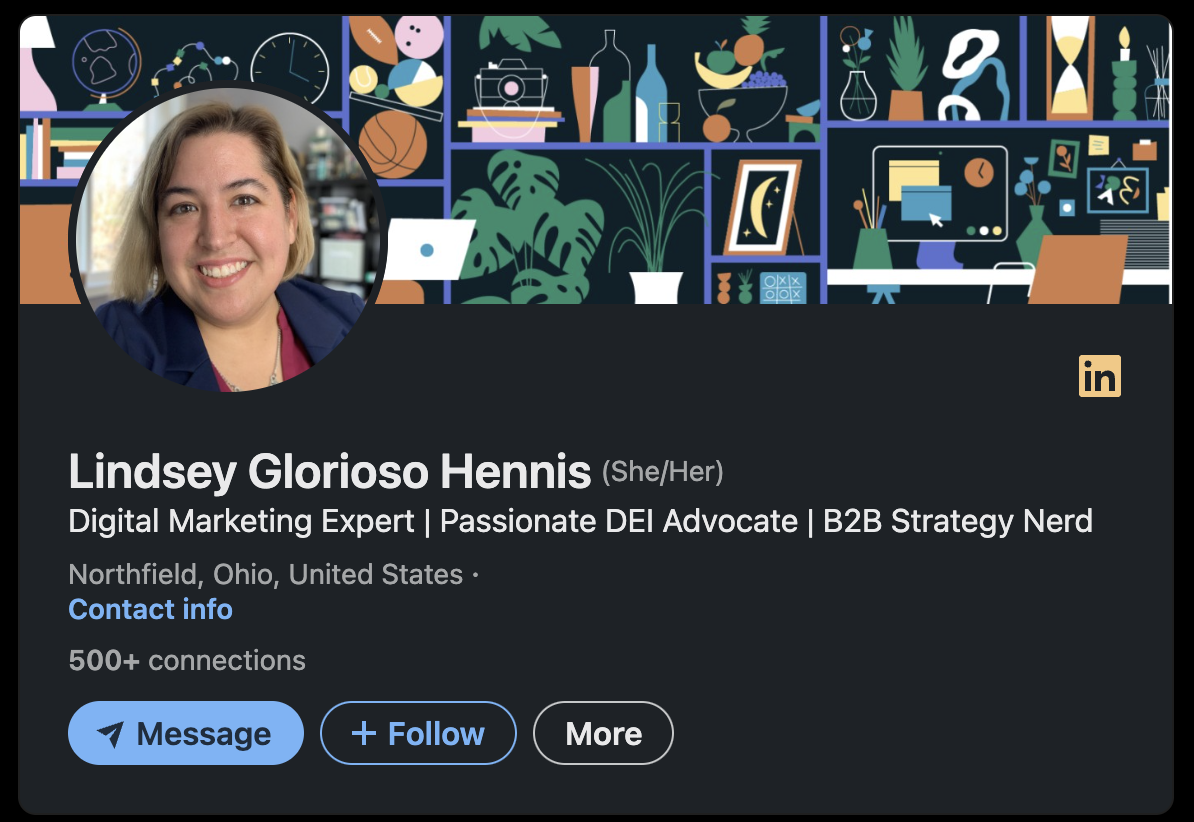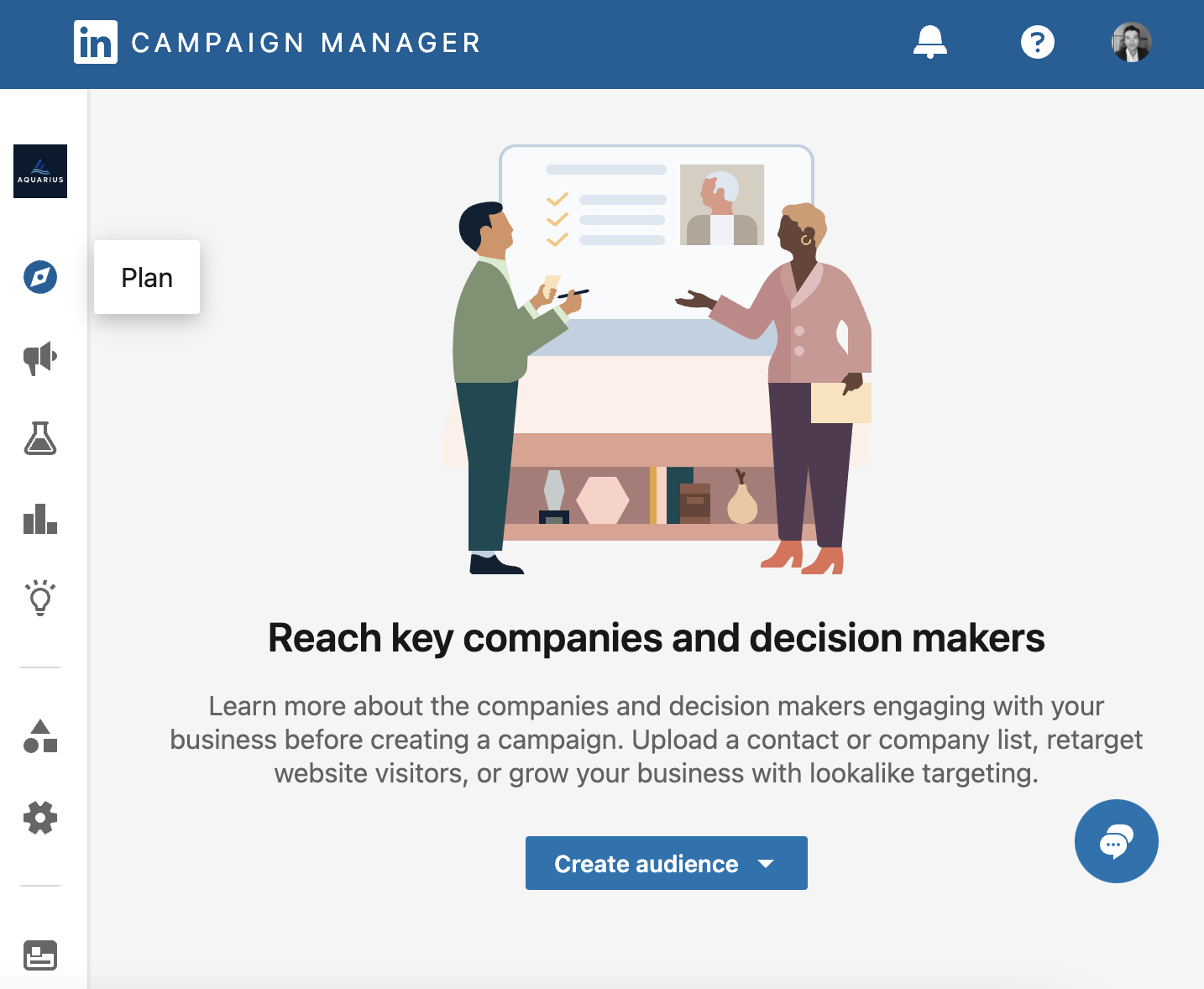How to Use LinkedIn for B2B Lead Generation: Strategies and Techniques
Tap into LinkedIn's 600 million users to supercharge your lead-generation efforts.
Discover the power of this professional network, which connects you with a targeted audience of diverse professionals across industries.
This guide will show you how to maximize LinkedIn's features for personalized outreach.
LinkedIn B2B Lead Generation
To optimize B2B lead generation on LinkedIn, start by optimizing your profile, building a strong network, and using advanced targeting features.
Craft effective messages, nurture leads, and build relationships. Measure and optimize your efforts, and be aware of ethical and legal approaches.
1. Optimizing LinkedIn for Lead Generation
LinkedIn's advertising platform can be leveraged for B2B lead generation if you have a well-optimized profile.
Here are the steps on how to optimize your LinkedIn for lead generation:
1.1. Optimize your Profile
Make sure it's up-to-date and contains relevant information about your company, products, and services.
Include photos, videos, and multimedia to showcase your skills.
Use relevant keywords in your job description and profile.
For instance, let's say you own a digital marketing agency.
Have a clear photo of yourself. A professional headshot is highly preferred.
Your banner could show a team photo or a relevant design representing your core services.
Include a detailed description of your services, such as SEO, SEM, social media marketing, etc.
You can also upload a promotional video that showcases your team and their expertise or successful case studies as featured media.
Ensure that you use keywords relevant to your industry, like "digital marketing," "seo," "content marketing," etc., within your profile description and job roles to improve visibility in searches.
1.2. Use LinkedIn Ads
Use LinkedIn's targeting capabilities to reach specific audiences and generate leads for your business.
For example, if you're launching a new service for eCommerce businesses, you can use LinkedIn Ads and start creating a campaign targeting professionals working in eCommerce industries.
You could filter targets by job title, company size, and even specific companies.
You can create Sponsored Content or InMail campaigns to promote your services, share valuable content, or offer a free consultation.
1.3. Use LinkedIn Groups
Join or create relevant groups, participate in conversations, and announce new services, products, and events in these groups.
For an e-commerce business, join groups like "Digital Marketing Experts," "E-commerce Leaders," or "SEO Professionals," where you are likely to find potential clients or partners.
1.4. Identify Trends and Opportunities
Use LinkedIn's in-house analytics to optimize your campaigns.
For example, if you see a spike in profile views from professionals in the healthcare industry, you might consider creating a new service package tailored for healthcare clients.
1.5. LinkedIn's Referral Program
Ask your contacts to recommend your business or product.
For instance, if you have satisfied clients who have benefited from your digital marketing services, ask them to write a recommendation for you on LinkedIn.
If a former employee has moved on to a company in need of your services, they could recommend you.
This not only adds credibility to your business but also makes it easier for potential clients to trust you.
You can also give endorsements to others to increase your chances of getting endorsements in return.
2. Strategies for Building a Strong Network
Networking on LinkedIn can help with both personal and professional growth, but it requires some effort.
2.1. Complete your Profile
Include your current professional headshot, education, and experience, as well as any expertise you possess.
This will help you create an image of yourself that potential employers, colleagues, and customers can trust.
For instance, if you are a freelance graphic designer, to complete your profile, it is important to include your previous roles, such as Junior Graphic Designer at a Creative Agency, and your current role.
Additionally, you might want to highlight your expertise in areas like Adobe Illustrator and InDesign, UI/UX design, and brand development.
2.2. Connect with People you Already Know
Find people with similar interests, skills, and goals.
Let's assume you are an aspiring chef. Reach out to your former culinary school classmates, mentors, and past co-workers on LinkedIn.
Search for other professionals you've crossed paths with during food festivals, competitions, and events.
2.3. Join or Create Groups
Make sure the groups are relevant to your interests, industry, or profession.
Take part in the discussions and post relevant content.
For instance, a sustainability consultant can look for groups dedicated to sustainability, green technology, and environmental policy.
2.4. Ask Network to Endorse your Skills
If you are a software developer specializing in JavaScript, ask your former colleagues, managers, and any clients you have worked with to endorse you for JavaScript and other related skills, such as React and Node.js.
3. Leveraging LinkedIn’s Advanced Targeting Features
Businesses can pinpoint their ideal target audience with ease with LinkedIn's Sales Navigator, which provides access to more than 500 million professionals.
Business owners can reach prospects using a variety of methods once they identify their ideal prospects.
Through LinkedIn's advanced targeting features, businesses can significantly reduce prospecting time and maximize sales returns.
4. Crafting Effective Messages and Content
Engaging prospects on LinkedIn requires effective content and messaging.
Creating engaging LinkedIn content that resonates with your target audience is the key to building relationships and driving conversions.
Here are some tips:
4.1. Understand your Audience's Pain Points
Take into account their interests, job roles, and challenges to make sure your content rings true.
Suppose you're running a fitness blog.
After conducting a survey, you find that most of your audience consists of office workers interested in home-based workout routines.
They face challenges with time constraints and a lack of motivation.
To meet their needs, you start creating content like "15-minute Cardio for Busy People" or "Motivational Tips for Consistent Home Workout".
4.2. Use Visual Tools
Use infographics, videos, and images to communicate your message more effectively.
For instance, if you are a financial advisor, simplify complex investment terms and strategies by developing infographics and short explainer videos.
Use vivid images to depict different investment options.
4.3. Content Should be Concise
Long-form content can be hard to read.
Break up your content with bullet points and short paragraphs.
For a marketing consultant writing about the importance of SEO, instead of creating a lengthy paragraph, break the content into short sections with bullet points:
Understanding SEO
SEO Strategies
Monitoring and Adjusting your SEO
4.4. Content Should be Authentic
Share your own experiences and insights. This will help you build a more personal connection with your audience.
For instance, if you are a startup founder, share your personal stories about your journey with your audience so they can relate to you.
Discuss the challenges you faced, how you overcame them, and the lessons you learned.
4.5. Repurpose Existing Content
This will increase engagement with your content and help you expand your reach.
For example, a travel blogger may shoot and edit a vlog about their recent trip to Iceland and post it on YouTube.
They can share the YouTube link on their LinkedIn profile with a compelling caption.
5. Nurturing Leads and Building Relationships
Engaging with prospects and building credibility on LinkedIn is one of the best ways to nurture leads and build relationships.
5.1. Provide Useful Information
Enhance your LinkedIn presence by strategically sharing captivating content related to your business, specifically tailored to engage your prospective audience.
If you specialize in sustainable farming, take advantage of relevant LinkedIn groups centered around sustainable practices in agriculture.
In this context, you could contribute by initiating meaningful discussions and sharing insightful articles on the advantages of crop rotation, delving into different rotation schemes while highlighting their respective pros and cons.
5.2. Contribute to Group Discussions
To demonstrate your knowledge and build credibility, share your own content, such as blog posts and videos, to build your reputation.
Suppose someone asks about the effectiveness of pay-per-click (PPC) advertising, and you are a digital marketing professional.
In that case, you contribute to the discussion by sharing insights from your experience and explaining when PPC can be a profitable strategy, thereby demonstrating your understanding of the field.
5.3. Refrain from Spammy Content.
Maintain a balanced approach to posting on LinkedIn by avoiding excessive self-promotion.
As a freelance writer, rather than bombarding multiple LinkedIn groups with frequent service-related posts, opt for a more valuable and engaging strategy.
Share valuable tips on enhancing writing skills, provide reviews of popular writing tools, and occasionally mention your services within a relevant context.
This way, your contributions will be perceived as valuable content rather than spam, establishing your expertise while subtly promoting your services.
6. Measuring and Optimizing LinkedIn Lead Generation
To maximize the return on investment (ROI) from your LinkedIn lead generation efforts, it is crucial to implement a systematic approach that involves measuring and optimizing your strategies.
Here are some metrics to track:
6.1. Number of Leads Generated
To identify the most effective lead-generating activities, track the number of leads generated from each, like content promotion and engagement.
6.2. Lead Quality
Monitoring your lead generation activities allows you to effectively identify the highest-quality leads and areas that require improvement.
By analyzing the responses to your content or evaluating the time and effort needed to convert leads, you can gain valuable insights.
6.3. Cost per Lead
Knowing the cost efficiency of each activity will help you optimize your budget.
Suppose you are running a Pay-Per-Click (PPC) campaign on LinkedIn Ads.
After spending $500 on the campaign, you manage to generate 100 leads.
This means your cost per lead for this specific activity is $5.
Comparing the cost per lead across all your activities can help you understand which ones are most cost-effective.
7. Legal and Ethical Approaches to B2B Lead Generation
Businesses can generate B2B leads with LinkedIn, but legal and ethical considerations must be taken into account.
7.1. Spamming Users must be Avoided
You should not send unsolicited messages, buy contact lists, or use automated systems.
For an online retail company, cut back on sending daily promotional emails to your entire customer base.
Instead, tailor your communication to send relevant product recommendations based on the customer's previous purchases.
7.2. Focus on Organic Ways to Generate Leads
This includes building relationships and using content marketing.
For instance, if you are a digital marketing agency, create a series of valuable how-to blog posts and video tutorials on effective social media strategies.
This will attract many aspiring entrepreneurs to your site, where you can offer further help via consultations.
This helps generate leads in a natural and mutually beneficial way.
7.3. Privacy Should be Protected
Data collection should be transparent and limited to necessary data, and companies should avoid intrusive practices.
For example, for an e-commerce platform, it is important to update your data storage practices to ensure encryption and protection of user data.
You should also implement a two-factor authentication system to increase account security for your users.
Mastering B2B Lead Generation on LinkedIn
LinkedIn is a great tool to use if you are a business and want to start generating high-quality B2B leads for your company.
In this article, we’ve covered:
Optimizing LinkedIn for lead generation
Strategies for building a strong network
Leveraging LinkedIn’s advanced targeting features
Crafting effective messages and content
Nurturing leads and building relationships
Measuring and optimizing LinkedIn lead generation
Legal and ethical approaches to B2B lead generation
A highly effective lead generation campaign hinges on the quality of leads, dedicated effort, and strategic follow-up.
LinkedIn presents an exceptional opportunity for businesses to maximize their success, provided they possess the necessary skills to leverage it effectively, adeptly follow up with leads, and use its features to their fullest potential.



















